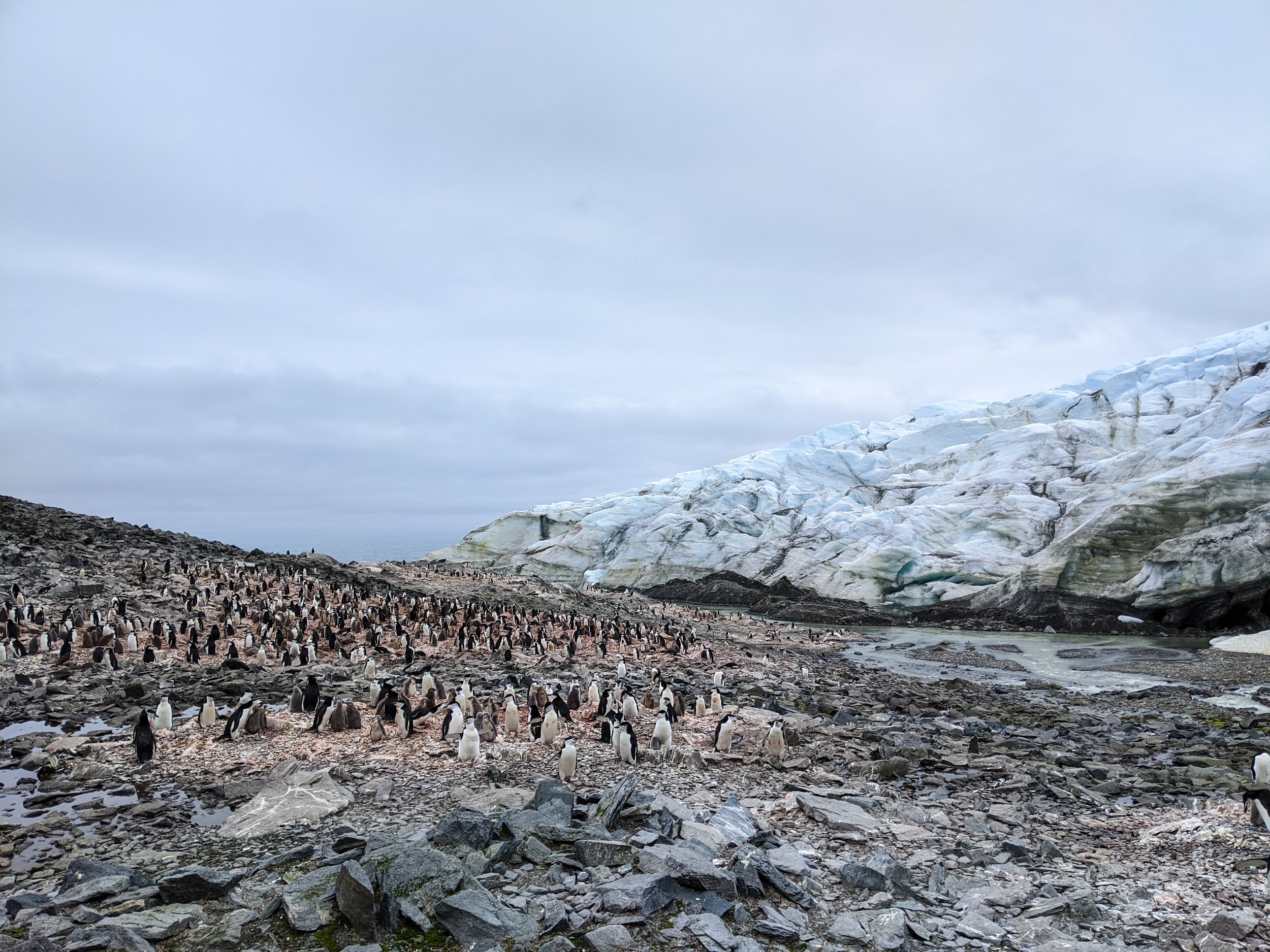
Elephant Island Expedition
Elephant Island is a remote place - off the tip of the Antarctic Peninsula
This map was created from the Joint Services Expedition, 1970-71.
Elephant Island has an interesting history. In 1914, Ernest Shackleton and his crew sailed south on the Endurance. Their expedition did not go as planned. The ship was crushed in pack ice in the Weddell Sea and sank.
Eventually the crew made their way to Elephant Island to await rescue.
55 years later, the Joint Services Expedition of 1970-71 made a full survey of the island, taking biological, geological, and meteorological measurements along the way.
Since then, there has been little activity on much of the island. A Brazilian research hut on the eastern shore is used to study penguins, but much of the coast is rocky and exposed to the violent storms of the Southern Ocean.
The Joint Services Expedition found a lot of penguins, mainly Chinstrap penguins. But given the many changes in the Antarctic in the last 50 years, we were eager to know how these populations were doing.
Whether they’d declined, grown, or stayed the same, it would give us information about what’s driving the population declines we’re seeing elsewhere for this species.
Field Camp
Our first stop was to set up a field camp on the south shore of Elephant Island, on a rocky beach between a penguin colony known as Chinstrap Camp, and one called Jacob’s Ladder. This site gave us a base of operations while we surveyed several colonies close to one another. A field camp also makes the day more efficient, as the surveys can start earlier in the day without the need to catch a lift ashore from the ship.
Camping in Antarctica is not as serene as one might imagine. Nearby penguin colonies mean the pungent odor of guano and loud squawking, and were visited in the night by curious young elephant seals that have a habit of crushing things with their bodies out of pure curiosity.
Not quite pristine
We imagine Antarctica to be a pristine, snow-covered wilderness, but it feels the impact of our activities to the north nonetheless. This Yokohama fender is basically a big bumper that ships use when they need to tie up to each other in the open ocean. It prevents the ships from slamming together. These are most often used in the Antarctic by transshipment vessels - ships that meet up with fishing vessels to transfer their catch. Transshipment allows fishing vessels to continue fishing without the need to return to shore. This kind of industrial fishing has the capacity to remove substantial amounts of biomass from the ocean, and the effects of fishing in the Antarctic and Southern Ocean are still not well-understood.
This fender was certainly the largest piece of trash we found, but we also picked up buoys, rope, gloves, bottles, a rubber boot, and even an empty black barrel labelled “POISON.”
Tools
Our goal was to do a complete survey of the island to see how penguin populations had fared over the last 50 years. To do this, we both counted the nests by hand as penguin researchers have done for decades, and also captured aerial imagery from a small off-the-shelf quadcopter. Our two engineers operated the drone and used the resulting data to train a machine learning model that we can use to count nests in imagery automatically.
The Changing Antarctic
We expected to find that chinstrap penguin populations had declined, but not that many colonies had declined by 50%. At the same time, we ran kept finding glaciers melting away. The melting of glaciers is both evidence of change - warmer temperatures drive the melt - and a cause of change. The fresh water and sediment that comes off of a shrinking glacier changes the chemistry of the coastal waters, and that in turn leads to changes in the phytoplankton communities that krill and other zooplankton rely on - the same zooplankton that animals like whales, seals, and seabirds eat.
At the same time, Gentoo penguin populations are increasing on the Antarctic Peninsula. These subantarctic penguins are finding that the conditions of Antarctica are feeling a little less polar than they used to.
Antarctica always reminds you that it’s a rugged, unforgiving place. As ever, we spent many days sailing back and forth waiting out bad weather and rough seas, or looking for a sheltered place to get ashore. But this expedition was also a reminder that we need to look at those rugged, unforgiving places. If we don’t, we might miss out on a critical datapoint - like a 50% population decline - that can give us a warning about the direction that the ecosystem is heading in, or help us figure out what questions to ask next.








